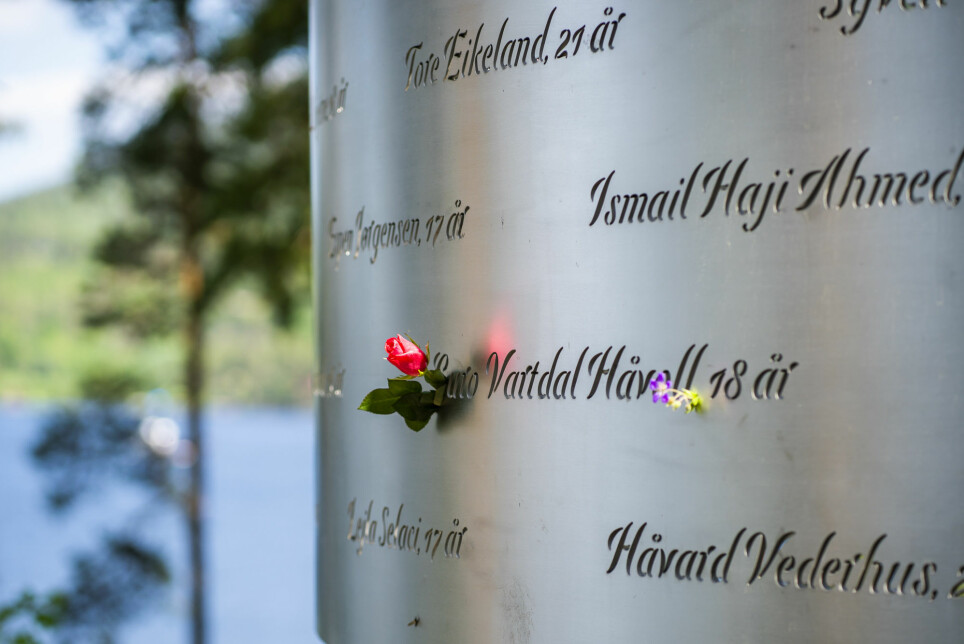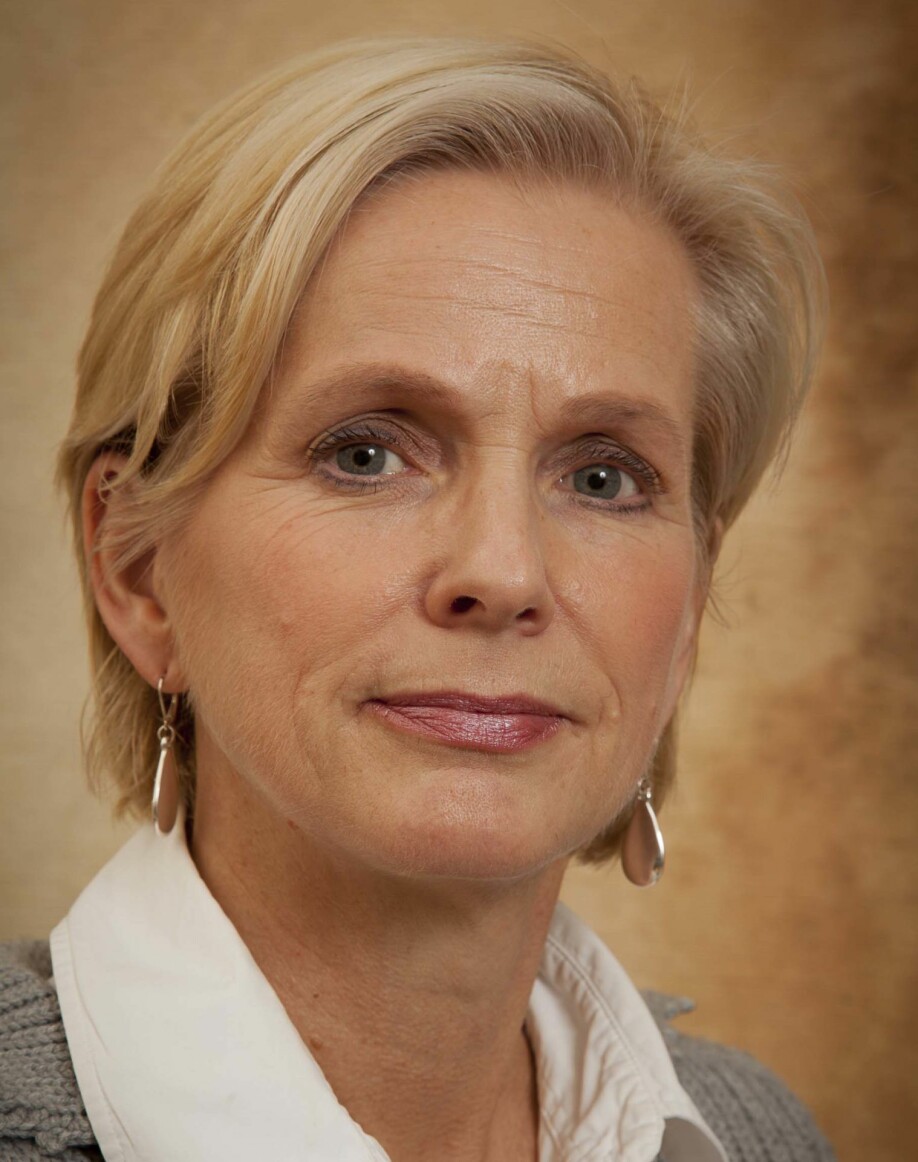
Research on Utøya survivors:
"We were probably a little naive. We did not understand how difficult things would be for those who survived the attack.”
“There are two ways in which the Utøya attack differs from other traumatic events,” says Head of Research Grete Dyb.
The researchers who followed up survivors and their relatives after the 22 July terror attack had dealt with survivors of the tsunami in Thailand and knew how many were affected by the trauma for a long time afterwards.
“Despite this, we did not understand how difficult things would be for those who survived the Utøya attack. We were probably a little naive,” Head of Research Grete Dyb tells forskning.no.
Many of the young people who survived, and the parents who brought a changed child home, have suffered multiple long-term health problems.
Grete Dyb leads research at the Norwegian Centre for Violence and Traumatic Stress Studies (NKVTS), where experts work on trauma following life-threatening events.

They had experience of dealing with the bereaved and survivors of the tsunami in Thailand in 2004, among other events.
Direct threat to life for over an hour
In other disasters that affect many people, such as the tsunami, some will have extreme experiences and be at risk of dying, while others will be further away and not feel that their lives are threatened.
Many of the tsunami survivors’ lives were not directly threatened. They managed to run away, or were already out of reach of the tidal wave.
“But the brutal attack on Utøya was extremely stressful for everyone who was there. There are two reasons for this. All the young people on Utøya were in mortal danger for well over an hour. The slightest wrong move, and they would have been killed,” explains Dyb.
Three out of ten swam to safety, risking drowning. It was only 16 degrees in the water, and several said they got cramps. One of them drowned.
They saw friends being killed
Another difference was that those who survived the terror on Utøya saw friends or loved ones being killed or badly injured.
“The fact that so many lost someone they knew was hard to bear, and naturally the period since has been marked by extreme grief,” Dyb says.
Traumas also differ depending on whether the dramatic event is a deliberate act, or a 'chance' natural disaster, she explains.
“Recovering from a trauma caused by a premeditated murder can be harder,” she says.
Grete Dyb is a child and adolescent psychiatrist, with a doctorate from the Norwegian University of Science and Technology (NTNU).
Important to identify traumas as soon as possible
Dyb wasted no time after the terror attack on Utøya in the summer of 2011. The researchers wanted to follow up the young people to identify trauma cases. It helped ensure that they would be offered help.
“They needed peace and quiet at first, but it was important to find out how they felt, as quickly as possible,” says Dyb.
“We applied for funding and ethical approval as usual, but we worked much faster than normal,” she says.
The centre quickly prepared the research manual, and the Regional Committees for Medical and Health Research Ethics prioritised the project over other applications.
Four months later, the first interviews were underway. In a research context, this is a record time.
The answers helped the centre to advise the health authorities how to draw up an effective follow-up programme for those affected.
Record-high participation: 8 out of 10 responded
The researchers sent information letters to all the surviving attendees at the Workers’ Youth League (AUF) summer camp on Utøya. They then phoned them two weeks later to invite them to participate in the study.
“In the letter, they were given the right to opt out, which they could do by calling or texting. But only a few opted out,” says Dyb.
As many as 79 per cent participated in one or more surveys, with roughly the same number of young men and women included. That is an unusually high response rate.
The interviewers were health professionals trained in dealing with trauma. At a training seminar, doctors, psychologists and nurses practiced on each other.
They travelled around Norway by car, train and plane to interview the young people, mainly at their parents’ homes. Alternatively, doctors’ surgeries or municipal offices were used.
The first round of interviews attracted the most participation.
There were no indications that they started too early. But starting four weeks after the attack would probably have been too soon,” says Dyb.
Parents and children crying, emotions running high
What was each survivor’s experience of the 90 minutes from when they realised they were in mortal danger until the police arrived and the killer gave himself up?
“Some gave a brief account, while others described detailed events over five densely written pages,” Dyb says.
The interviews were often a strain for the young people, parents and interviewers.
“Some broke down in tears at the very first question. Parents cried, children cried. Emotions were running high, especially at first,” says Grete Dyb.
“But that does not mean that you have asked something you shouldn’t have. It is also not an expression of the difficulties they struggled with,” she emphasises.
If the young people broke down, the interviewers were instructed to ease off, let them cry and dry their tears, and show that all was not lost.
Suggested pauses or suspension of interviews
The young people needed security and protection in the period immediately after the terror attack. Dyb says that NKVTS emphasised that the interviews must be carried out in an ethically sound manner.
“The interviewers had to be attentive and reassuring, and receive the reactions in a professional and supportive way,” says Dyb.
The interviewers were given detailed instructions on what to ask. The first questions were objective, non-emotive questions, like where they were when the shooting started.
“Then they were asked about symptoms before and now, and whether they got enough help. If the young people were struggling, the interviewers were to suggest a break or ask if they wanted to suspend the interview or continue.
If they were in doubt whether to continue, they would take a break. Then the young people were given the chance to continue later. Some interviews had to be rescheduled,” says Dyb.
“There were a few acute situations. But most wanted to continue with the questions after a break,” says Dyb.
Many municipalities failed
The survivors were asked about the psychological after-effects, and whether they received the help they needed.
“There were many municipalities that failed, despite the fact that they received earmarked funds from the state,” Dyb says.
The municipalities received NOK 144 million to provide medical treatment for the survivors and the bereaved. Aftenposten recently revealed that many of the municipalities cannot document how these funds were spent.
“If they did not receive help or had fallen out of the support system, we helped them get back in the loop,” Dyb says.
Many people only realised they needed help later
Some were unhappy with the help they had received. Many municipalities did not take the trouble to enquire about their young citizens who had survived Utøya.
“They probably expected that they would seek help if they needed it. But our research shows quite clearly that many more should have been contacted by the health service.
It is easier to receive help when you are asked if you need it, than if you have to take the initiative yourself,” Dyb explains.
In addition, many only realised that they were struggling after many months had passed. One of the affected young people who survived Utøya says:
“It took a year for me to realise that I had major problems and needed help. But by then there was no help available.”
The health services for this group were reduced in many municipalities after one year.
1 in 3 still struggling
Today, fewer people have symptoms of post-traumatic stress disorder, or similar symptoms, than immediately after the event.
But one in three of the survivors still struggle with anxiety and depression in everyday life. They still need medical treatment.
This was revealed in the last survey, just over a year ago.
Many, including the health authorities, thought that the traumas would heal within a year.
“But our research shows that it takes much longer for many to get over things,” says Dyb.
7 out of 10 received psychological help
As many as 70 per cent of the survivors received help from the specialist health service.
“We received mixed feedback. Many were very satisfied with the help they received. But some thought that the service was poorly organised, and that the health personnel did not have expertise in dealing with the type of trauma they had experienced,” she says.
This is very useful information for us to work on,” Dyb emphasises.
In addition, some of those who had firearms wounds did not receive adequate help.
The survivors search for each other on social media, and many have met in regional gatherings to talk about what happened.
2 in 10 receiving benefits
Today, as many as 20 per cent of the survivors of the Utøya terror attack receive disability or other forms of benefits, such as unemployment benefits or work assessment benefits.
This is often due to a mixture of psychological after-effects and physical injuries.
“This is probably a much higher proportion than is normal in the age group as a whole,” says Dyb. But the researchers hope this percentage will fall in the years to come.
She believes this shows the importance of following up such dramatic events for a number of years, in order to document long-term repercussions.
However, the centre experienced problems getting funding for the most recent round.
Parents’ situation
The children’s parents were also interviewed.
“We were initially very naive when it came to the parents,” says Dyb.
Although their child had survived, many of them had greatly suffered.
“Most of them had several hours not knowing whether their child was still alive, seriously injured or dead,” she emphasises.
They got back a completely different child. Many of them had great difficulty sleeping and eating.
One in five parents experiences the same symptoms as many of the children, with signs of post-traumatic stress disorder. Even nine years later.
Enquiries from across the world
Trauma researchers cooperate closely over national borders. In the time before the studies on 22 July were completed, the centre exchanged trauma research from the USA and the UK in particular.
“We used experience from research into the 2005 terrorist attacks in London,” says Dyb, referring to when
52 people were killed in suicide attacks on the public transport system.
Almost all the studies carried out by the knowledge centre on the 22 July terror attack have been published internationally. Since 2011, the exchange of experiences has gone the other way.
French researchers approached their Norwegian counterparts after the terrorist attacks in Paris in 2015 and in Nice in 2016.
In Paris, 130 people were killed. In Nice, 86 people were killed when a terrorist drove into crowds on the seafront on Bastille Day.
New Zealand researchers have contacted them after 49 people were killed during a terrorist attack on a mosque in Christchurch in 2019.
“They want to learn from the things we have learned. We work closely with the French, and are even read by Russian researchers,” says Dyb.
German, Dutch and Swedish media have contacted them recently to gain an insight into the results of the studies.
———































